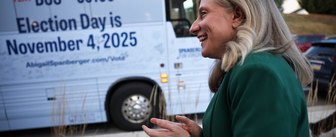As controversial as this election campaign has been, the vast majority of people are set to vote for the same party that they did in 2012
About 85% of voters in the 2016 election will be people who voted in 2012. This is not everyone who will vote in 2016: there are also newly eligible potential voters aged 18-21, new citizens, and those who were eligible for both elections but did not vote in 2012. These are all interesting groups, and some are likely to break strongly in favor of Clinton or Trump. But the vast majority of the electorate are those who voted for Obama or Romney four years ago, and so you can learn a lot about what is happening at the individual-level in this election by focusing on how many and which of those people are switching sides.

The next time someone talks about how this election has fundamentally upset existing patterns of support for Democrats and Republicans, remember the table above. Based on our polling and analysis, 88% of voters who voted for Obama or Romney in 2012 and who will vote in 2016 are voting for the same party as last time. Romney supporters almost all support Trump; Obama supporters almost all support Clinton.
This is not a pattern that has only emerged in the final days of the campaign, the rates of switching were nearly as high in the middle of September, before any of the debates. The discussion below focuses on those who are switching, but it is important to recognise the very limited degree to which there is any realignment of US politics happening at the level of individual voters.
However, while these rates of switching are low in absolute terms, they are higher than the corresponding figures were in our polling just before the 2012 election, when compared to 2008. In that election, Obama and Romney both retained over 90% of the 2008 vote for their parties.
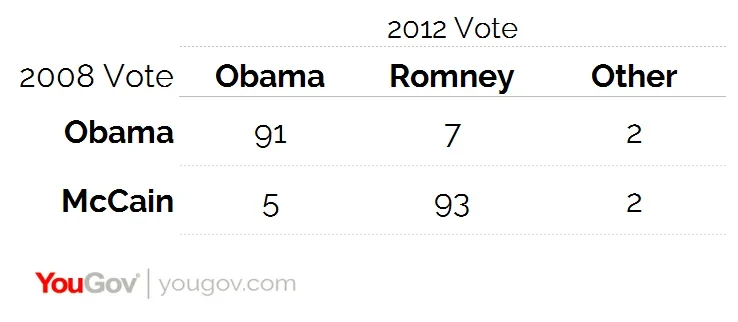
So switching is actually up by 50% versus 2012, from about 8% to 12% of previous election voters. Much of the increase can be attributed to the relatively successful third party candidates, direct switching between the major party candidates is about the same. Who are the converts?
Education is the strongest predictor of switching from 2012
One of the clearest patterns is that education predicts switching versus 2012, with high education voters trending towards Clinton and low education voters trending towards Trump. This is visible both in the patterns of gains and losses for each candidate versus 2012.
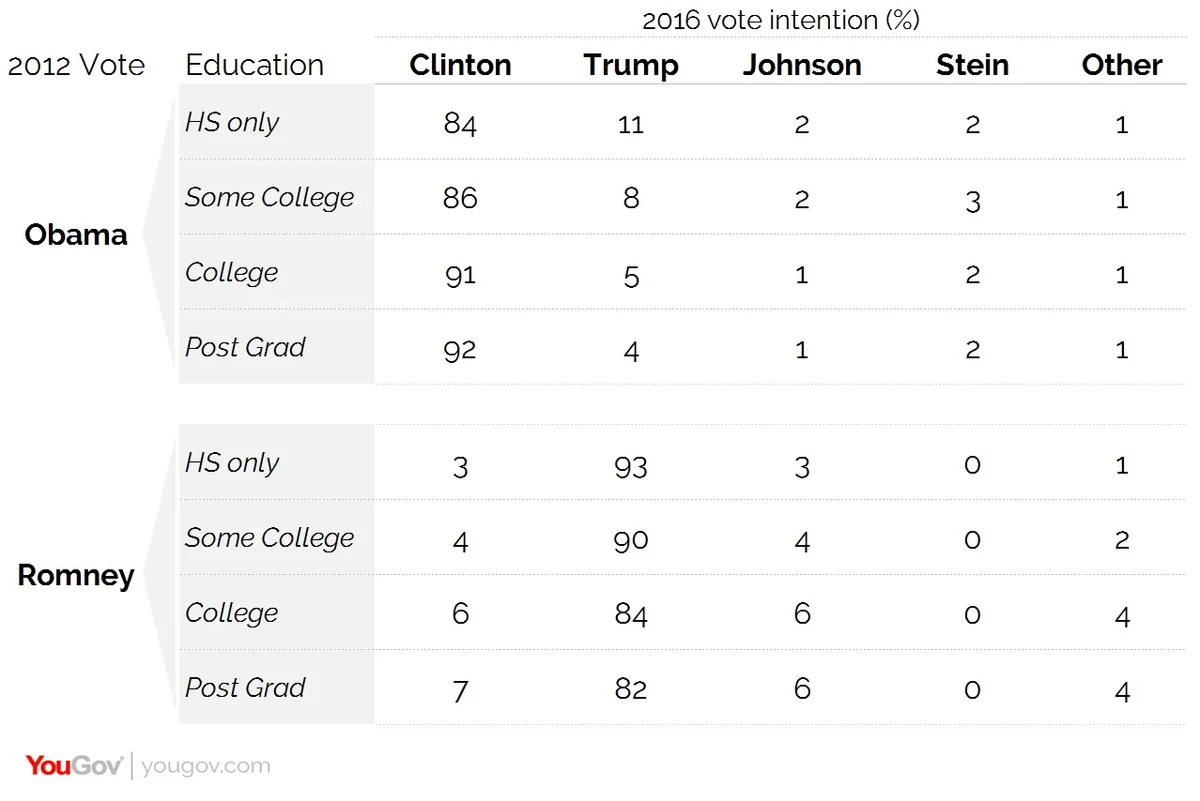
Race predicts switching as well
Trump is doing better at retaining white voters from Romney and gaining white voters from Obama, while Clinton has the same advantages among Black and Hispanic voters. Of course few Hispanics and very few Blacks supported Romney, so Clinton’s large proportional gains in these groups do not yield that many additional votes.
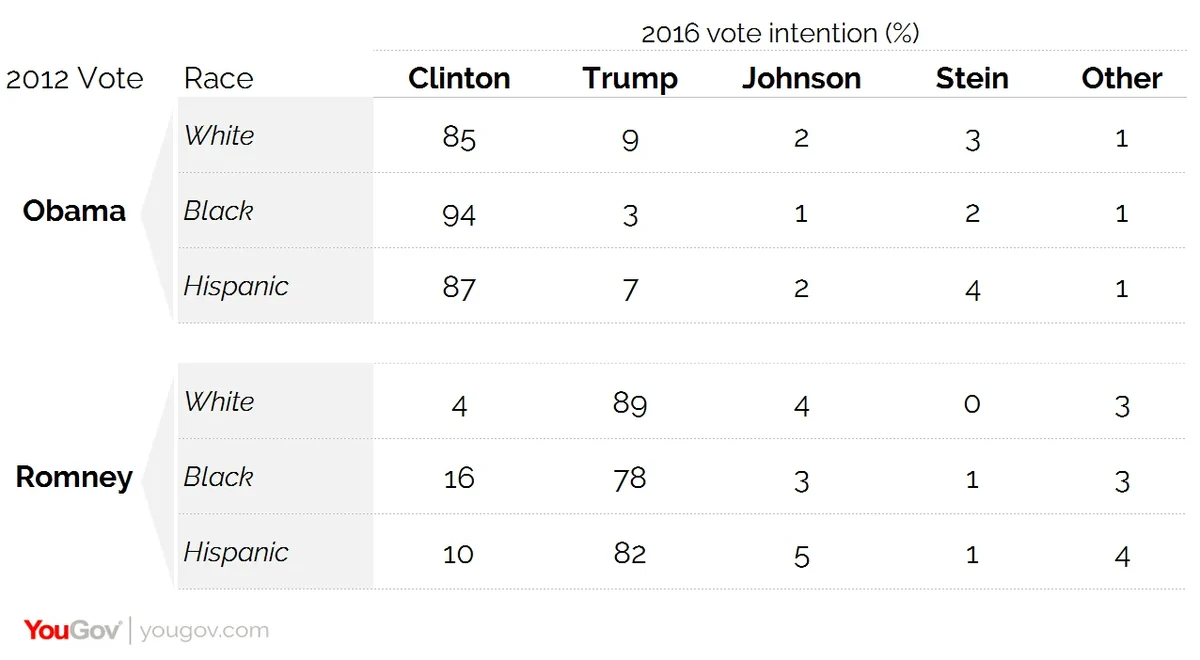
Gender predicts switching less well than you might think
Perhaps surprisingly, while Clinton is retaining female Obama support better than she is retaining male Obama support, there is only a very small difference between Trump’s success at retaining male versus female Romney supporters.
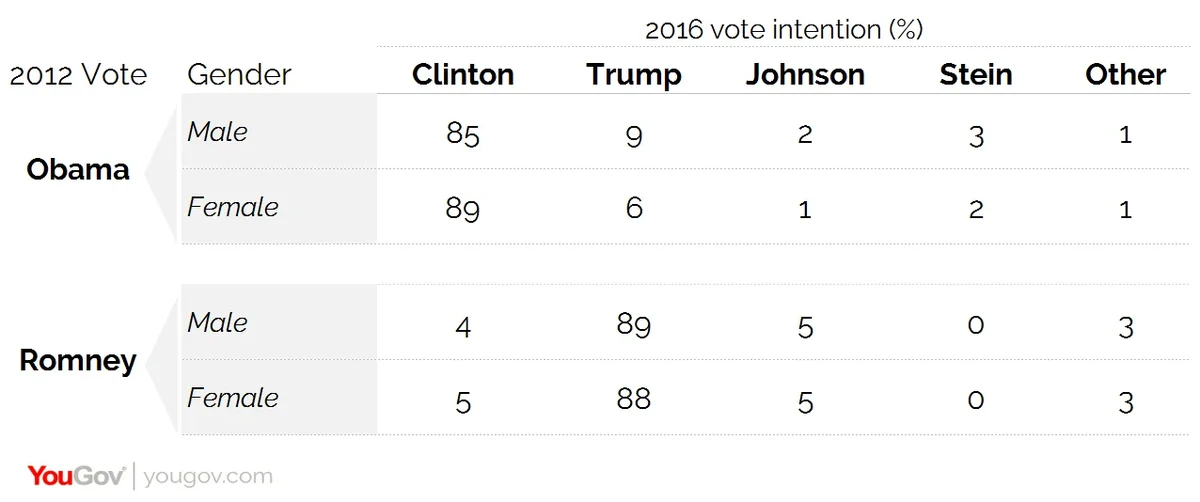
Putting all of these patterns together, we see an election in which the electorate largely breaks down as it did in 2012, but with shifts by education levels and to a lesser extent gender and race. All of these shifts reinforce pre-existing demographic patterns in support for the two parties, so it is hard to make the case that this is a major realignment. The answer to “who are the Clinton voters?” is “mostly Obama voters”. The answer to “who are the Trump voters?” is “mostly Romney voters”.



